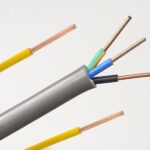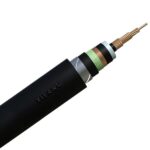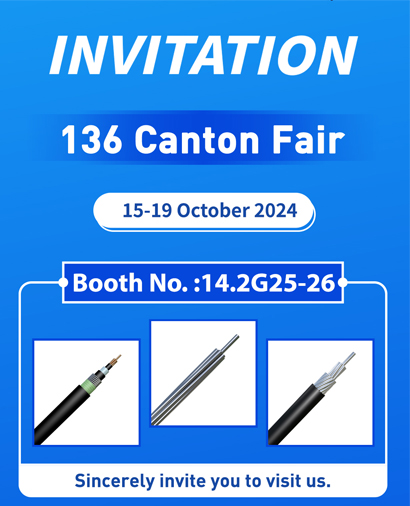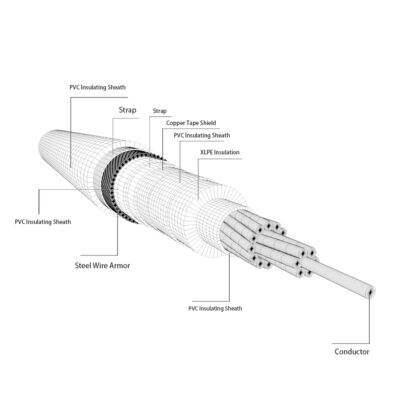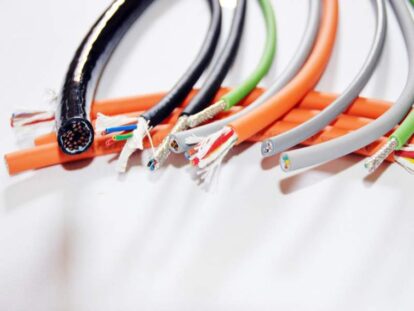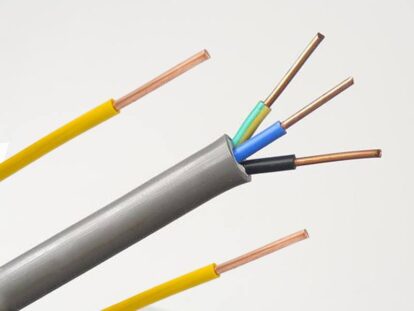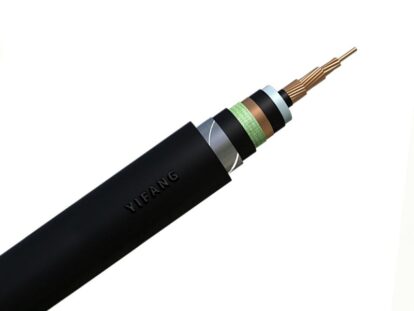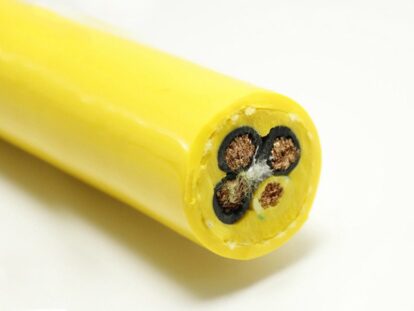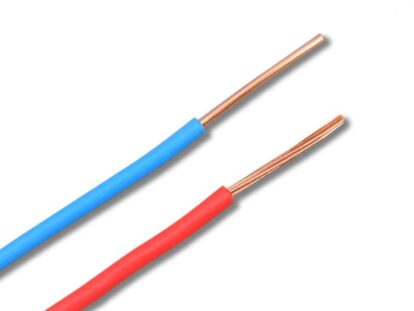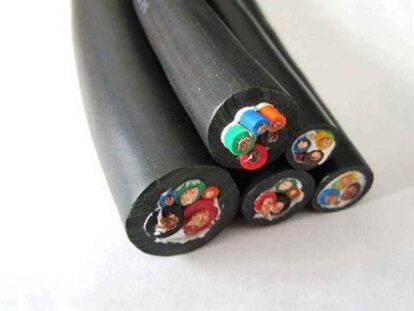When most people think of electrical wiring, they imagine the shiny copper wires found in homes and businesses. However, many people need to learn that there is a type of wire made from pure copper called a bare copper conductor. This wire is used for a variety of applications, including electrical wiring, speaker wiring, and automotive wiring.

The bare copper conductor offers several benefits compared to other types of wire, such as corrosion resistance and high conductivity. Let's take a closer look at what a bare copper conductor is and why it's a such popular choice for electrical wiring.
Definition
A bare copper conductor is a type of electrical wire that is not insulated or covered in any other material. This makes it ideal for use in many applications where electrical wiring is exposed, such as in electrical panels or inside of appliances.
Bare copper conductors are also often used in outdoor applications, as the metal is resistant to corrosion. One of the main advantages of using bare copper conductors is that they are very good at conducting electricity. This makes them ideal for use in high-voltage applications where power needs to be transferred quickly and efficiently.
Additionally, bare copper conductors are relatively inexpensive, making them popular for many commercial and industrial applications.
What are its uses?
Copper has been used as a conductor of electricity for thousands of years. In its pure form, it is a very soft metal that can be easily shaped and moulded. It is also an excellent conductor of heat, making it ideal for household wiring and electrical components.

However, pure copper is only sometimes used as a conductor because it is so soft and malleable. Instead, it is usually combined with other metals to create a stronger and more durable alloy. The most common type of alloy used for electrical conductors is "bare copper." This alloy is made up of 95% copper and 5% zinc, and it is the preferred choice for many applications due to its high level of conductivity and its resistance to corrosion.
Bare copper conductors are often used in high-voltage applications such as power lines and electrical cables. They are also commonly used in the manufacturing of electronic components and computer chips.
How is it made, and what are the benefits of using it over other types of conductors?
Copper is one of the best materials for electrical conductors due to its high electrical and thermal conductivity. In order to make a bare copper conductor, the first step is to draw the wire. This is usually done by starting with a large piece of copper rod and then passing it through progressively smaller dies.
The final step is to anneal the wire, which helps to improve its flexibility. Once the wire has been drawn, it can be used as-is or coated with another material to enhance its resistance to corrosion. The benefits of using bare copper conductors include their low resistance and its ease of soldering. Additionally, copper is a very recyclable material, so it is a good choice from an environmental standpoint.
Are there any drawbacks to using bare copper conductors in your home or business wiring system?
While bare copper has many benefits as a conductor, there are also some drawbacks to consider. One of the biggest concerns is corrosion. Over time, exposed copper can develop a patina that can reduce its effectiveness as a conductor.
Additionally, if the copper is not properly sealed, it can be vulnerable to oxidation, which can cause shorts and other electrical problems. Another potential issue is that bare copper is a relatively soft metal, which can easily be damaged by miss-wiring or lost connections. Finally, a bare copper wiring system can become a fire hazard if not properly maintained. Consequently, it is essential to consult a professional before installing or modifying any wiring in your home or business.

How can you find out if bare copper is the best option for your needs?
When it comes to electrical wiring, a variety of different materials can be used. One option that is often used is the bare copper conductor. This type of material has a number of advantages, including its high conductivity and low resistance.
However, it is also important to make sure that bare copper conductor is the best option for your particular needs. One way to do this is to consult with an experienced electrician. They will be able to assess your specific situation and recommend the best course of action. You can purchase a bare copper conductor from various manufacturers if you decide to go with a bare copper conductor. Be sure to compare prices and features to find the best product that meets your needs.
What are some alternate names for bare copper conductors?
For example, "tinned" copper is often used in marine applications because it is resistant to corrosion. "Annealed" copper is soft and flexible, making it ideal for electrical cables. "Bundy" copper is a type of alloy commonly used in water pipes. And "drawn" copper is often used to manufacture coins and other metal objects. So, when shopping for the bare copper conductor, ask for clarification on which type of copper you need.
How to solder a bare copper conductor?
Soldering is a skill set that every budding electrical engineer should learn. Not only is it essential for joining together electrical components, but it's also a great way to repair damaged equipment. In this article, we'll show you how to solder a bare copper conductor, often used in making electrical connections.
It is important to clean the area where you will be soldering when you begin. This is important because it ensures that no dirt or debris could prevent the solder from bonding properly. Next, you can use a wire brush or sandpaper to clean the surface of the copper.
Once the area is clean, apply a small amount of solder to the tip of your iron. Then, touch the iron tip to the place where you'll connect. The heat from the iron will cause the solder to flow into the joint between the two pieces of copper. Continue applying heat and solder until the joint is filled and smooth.
Finally, allow the joint to cool before testing it with a multimeter. If everything checks out, then you've successfully soldered a bare copper conductor!

Tips for working with bare copper conductors
Most people are familiar with the soldering process, but did you know that you can also solder a bare copper conductor? This is a great way to connect two pieces of metal together without needing any other materials. Here's how to do it:
- Clean the surface of the copper with a piece of sandpaper. In this way, the solder will adhere better.
- Place the two pieces of copper that you want to solder together. You should make sure that they are touching each other.
- Apply heat to the joint with a soldering iron. The temperature should be between 700 and 900 degrees Fahrenheit.
- Feed the solder into the joint while you continue to apply heat. The solder will melt and flow into the joint, bonding the two pieces of copper together.
- Once the solder has cooled, you can trim any excess with a pair of wire cutters.
Now you know how to solder a bare copper conductor! This simple technique can be used for various projects, so give it a try next time you join two pieces of metal together.
The different types of bare copper conductors
There are many bare copper conductors, each with its unique set of properties. The most common type of conductor is solid copper, made from a single rod of pure copper. This type of conductor is very strong and resistant to damage but is also costly.
Another common type of conductor is stranded copper, which is made up of several small strands of copper wire. This type of conductor is more flexible than solid copper, making it ideal for use in applications where flexibility is required.
Finally, there is also tinned copper, which has a thin layer of tin applied to the surface. This helps to improve the conductor's resistance to corrosion, making it an ideal choice for use in environmentally harsh conditions.
Where to buy bare copper conductors?
When it comes to purchasing bare copper conductors, there are a few things you'll want to keep in mind:
- It's important to make sure that you're buying from a reputable retailer. There are a lot of online scams, so it's important to do your research and make sure you're getting what you pay for.
- You'll want to consider the size and gauge of the conductor. The size will determine how much current it can carry, and the gauge will determine how thick the conductor is.
- You'll want to think about the price.
Conductors can vary significantly in price, so it's essential to find something that fits your budget. With these factors in mind, you should be able to find a reputable retailer that sells the right size and gauge of conductor for your needs.



